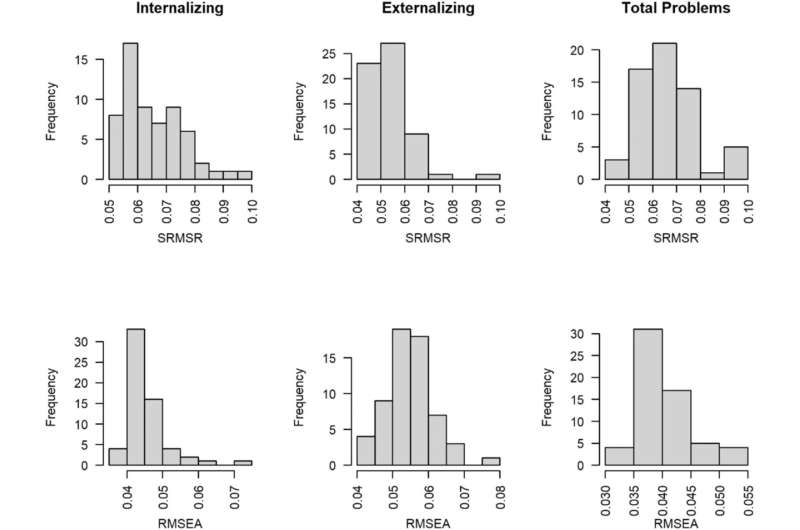This article has been reviewed according to Science X's editorial process and policies. Editors have highlighted the following attributes while ensuring the content's credibility:
fact-checked
proofread
Study suggests measurement bias in common child behavior assessment tool

Scores from a commonly used measure of behavior problems in young children may be skewed depending on the primary language, education, and sex of the caregiver who fills out the survey, as well as the child's age and race, according to new research from the NIH's Environmental influences on Child Health Outcomes (ECHO) Program.
ECHO Cohort researchers analyzed data from caregivers who filled out the widely used Child Behavior Checklist (CBCL) 1.5–5 on behalf of 9,087 young children ages 18 to 71 months from 26 ECHO research sites across the United States. The caregiver-reported survey evaluates a range of behavior problems in young children.
"Understanding children's behavior can help us identify potential issues in their development and mental health down the road," said Shuting Zheng, Ph.D. of the University of California, San Francisco. "To do this effectively, we need reliable ways to measure their behavior equivalently for children from diverse backgrounds."
The study found that how caregivers respond to the questions on the measure was biased the most by the language used to complete the survey, followed by factors such as the caregiver's education level and sex and the child's age and race. These biases persisted after accounting for mental health disparities between these groups.
Researchers noted that some information could get lost in translation and people from different cultures could understand child behavior problems differently. The gender of the person answering the questions and their level of education also had an impact and researchers pointed to parents' expectations about how children should develop as possible influences in how they answered the survey questions.
ECHO Cohort researchers were then able to identify some CBCL questions less affected by measurement biases introduced by sociodemographic factors but which still reliably captured childhood behavior problems. The subset of questions that showed little bias across survey-taker demographics still captures a wide range of behaviors across internalizing (e.g., emotionally reactive, withdrawn) and externalizing problems (aggressive behaviors and attention problems).
Going forward, ECHO Cohort researchers plan to apply these questions, evaluating their reliability in identifying children with clinically significant behavior problems.
"Finding questions with less measurement bias across sociodemographic groups helps researchers and clinicians measure behavior problems in different groups of kids of varying ages and family backgrounds more accurately," Dr. Zheng said.
The findings are published in the journal JCPP Advances.
More information: Shuting Zheng et al, Measurement bias in caregiver‐report of early childhood behavior problems across demographic factors in an ECHO‐wide diverse sample, JCPP Advances (2023). DOI: 10.1002/jcv2.12198


















